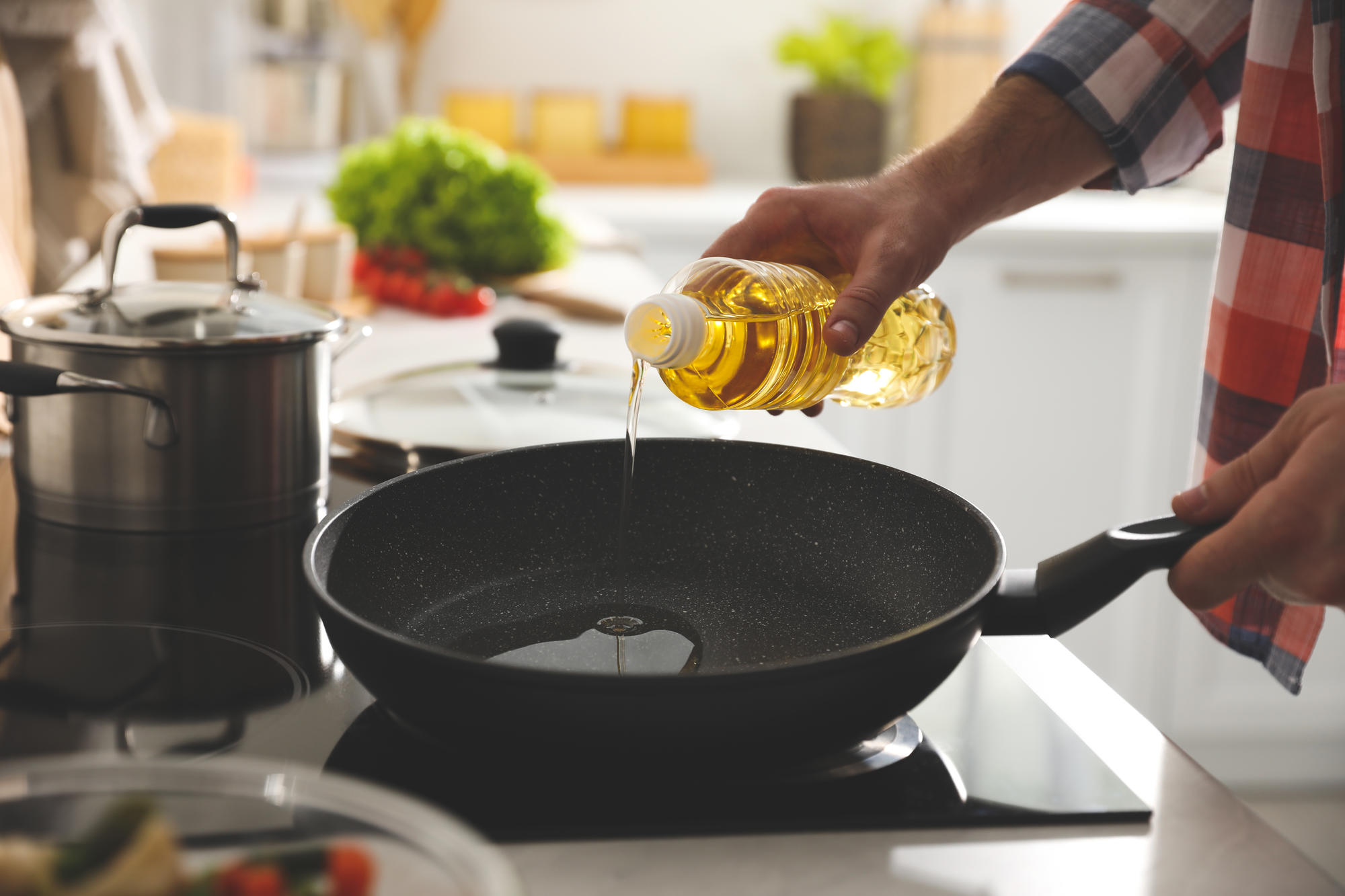Introduction
High cholesterol in the blood is considered the No. 1 risk factor for heart attack and stroke. The Centers for Disease Control estimates 38% of Americans have high levels of cholesterol in their blood. This condition is called hypercholesterolemia. Those who suffer from diabetes often also have high cholesterol, increasing risk factors.
Many lifestyle factors can contribute to high cholesterol. These factors include diet, sedentary lifestyle, smoking and obesity. Cholesterol tends to rise as we age, but even young children can have high cholesterol — especially if they are classified as having obesity. Cholesterol levels tend to rise in women after menopause.
Simple dietary changes can help to keep cholesterol levels low and protect you from problems affecting blood vessels, such as heart disease and diabetes.
What is cholesterol, and what does it do?
Cholesterol is a member of the fat or lipid family. It is a subgroup of steroid hormones called sterols. Cholesterol is the main sterol in the body. Cholesterol lipid is a waxy substance created in the liver that is attached to a protein for transport through the bloodstream. This is why cholesterol is called a lipoprotein.
Cholesterol is essential for life and is found in every cell membrane. It is important for fluid balance, cell signaling and nerve conduction. It is a precursor to the steroid hormones estrogen, progesterone, testosterone, aldosterone and cortisol and creates bile acids for fat digestion. It aids in the absorption of fat-soluble vitamins A, D, E and K and in calcium metabolism. Cholesterol in the skin allows the conversion of sunlightto vitamin D. High concentrations are found in the brain, where it maintains myelin sheaths and transmits nerve impulses.
Types of cholesterol
Cholesterol is referred to by acronyms LDL (low density lipoprotein), VLDL (very low density lipoprotein), IDL (intermediate density lipoprotein) and HDL (high density lipoprotein). LDL, VLDL and IDL are the major transport molecules delivering cholesterol and triglycerides to the cells and tissues. HDL molecules remove excess cholesterol and return it to the liver for repackaging.
Cholesterol in our blood is often referred to as either “good” or “bad.” Molecules that deliver cholesterol (LDL, VLDL, IDL) get the “bad” misnomer because cholesterol can be left behind to spoil or oxidize. HDL is considered “good” because one of its functions is to clean up cholesterol left behind by the delivery molecules.
LDL cholesterol is required for a healthy body, but it can go bad when it has oxidized. This is known as oxycholesterol. Oxidized cholesterol is treated by the body as an invader, triggering the immune system to isolate the molecule with plaque to destroy it. The combination of oxidation, inflammation and plaque development contributes to the narrowing of arteries and increased risk of vascular disease.
Another type of cholesterol that may be undesirable is the cholesterol we consume in animal foods. Since this cholesterol is not produced by our liver, it is an additional source of cholesterol. Animal products also contribute saturated fat, which the body uses to manufacture more cholesterol.
How plaque forms
Excess cholesterol molecules can adhere to artery walls, oxidize and contribute to plaque development, causing a condition called atherosclerosis. This can narrow or block blood vessels, restricting blood flow and leading to a heart attack, stroke or peripheral artery disease. Cholesterol can be made from dietary fat, particularly saturated fats, and excess belly fat. Reducing dietary saturated fat and losing body fat can lower cholesterol.
Foods that raise cholesterol
Meat, including beef, pork, chicken and fish, contain cholesterol produced in the animal’s body. High blood cholesterol can also result from dietary fat, especially from saturated fat (found mainly in animal foods) and trans fats (found naturally in such animal products as dairy). These fats increase the body’s cholesterol production. Many animal products, such as cheese, are also high in undesirable additives like sodium.
Many processed foods also contain trans fats. These foods are mainly shelf-stable products, such as crackers and dried goods. The U.S. Food and Drug Administration banned trans fats in these foods in 2013. These processed products often contain refined flour, added sugar, excessive salt and other unhealthy ingredients.
Cooking oils and foods cooked in oils also contain high amounts of oxycholesterol. Sauté foods in water, broth or wine instead of oil, and avoid frying in favor of slow, low-heat methods.
Foods that lower cholesterol
Antioxidants
For years, researchers have shown that arterial disease is reversible with lifestyle changes, particularly diet. A diet high in plant foods contributes many different antioxidants to protect against oxidation and inflammation.
One group of antioxidants, polyphenols, found in dark fruit, can protect cholesterol from oxidation. Berries, pomegranates, dark chocolate and leaf tea are rich in polyphenols. Brightly colored fruits and vegetables contain other antioxidants, such as vitamin C and beta-carotene. Nutritionists recommend nine servings per day. Portions are 1 cup raw or ½ cup cooked vegetables, and 1 cup chopped fruit or one or two whole fruits.
Soluble fiber
Soluble dietary fiber binds cholesterol in the bloodstream and facilitates excretion. This lowers circulating cholesterol and reduces the amount returned to the liver for recycling. Recommended daily intake includes 1–3 servings per day of food rich in soluble fiber. Serving sizes are ½ cup cooked legumes (beans, lentils, split peas), 2 tablespoons flax or chia seeds, ½ cup cooked oats or barley, or 1 serving of apples, apricots and figs (with skins).
Omega-3 fatty acids
The essential omega 3 ALA, or alpha linolenic acid, cannot be made in the body and must come from diet. Plant sources of ALA are optimal since they contain no saturated fat or cholesterol. Recommended daily intake includes 2 tablespoons flax meal or chia seeds or 5–10 grams of dried seaweed. Nonessential sources of omega-3 fats (DHA and EPA) are found in cold-water fish. Keep in mind, fish also contain saturated fat and cholesterol. Nuts also contain omega 3 fats. Consuming 1 ounce of raw nuts a day (particularly walnuts) is associated with a 28% reduction in coronary vascular disease.
Nitric oxide
Nitric oxide is a molecule produced from nitrates and L-arginine in our foods. It helps protect the inner walls of arteries, lowers cholesterol and improves blood flow. It also helps reduce high blood pressure. Recommended daily intake is 1–2 cups of raw leafy greens, such as spinach, kale and Swiss chard, or 1 ounce of raw walnuts or pecans.
Cooking destroys most nitrates needed to produce nitric oxide. Eat these foods raw or lightly steamed for ideal nitric oxide production. Chewing greens thoroughly allows oral bacteria to help produce nitric oxide. These must also be consumed daily since nitric oxide is a gas that dissipates rapidly.
Meal timing
Eating larger, high-calorie meals earlier in the day can result in a 20-point drop in LDL cholesterol. Eating the main meal late in the day is associated with an increased risk of obesity. Body fat, particularly around the belly region, can increase cholesterol.
Best practices
- Consume 15 grams of soluble fiber per day.
- You can get 15 grams from ½ cup of beans or lentils, 2 tablespoons of flax meal or chia seeds, ½ cup oats or barley and one apple, apricot or fig.
- Consume ½ cup of raw green leafy vegetables per day.
- Consume 1 ounce of raw nuts, particularly walnuts, per day.
- Reduce intake of animal foods and products containing saturated fat, cholesterol and salt.
- Reduce intake of processed foods high in fat, sugar, refined flour and salt.
- Add less sugar and salt to your home preparations.
- Consume high-calorie meals early in the day, fasting between dinner and breakfast.
- If you smoke, quit. Avoid secondhand smoke.
- Lose excess weight, particularly abdominal fat.
- Get at least 30 minutes of physical activity per day.
- Have your cholesterol checked annually with a blood test by your health-care provider.
High cholesterol is associated with an increased risk of heart disease, stroke, peripheral artery disease, diabetes and obesity. By taking some simple steps to improve your diet, you can reduce blood cholesterol and your risk for cholesterol-related diseases.
References
Cholesterol. Centers for Disease Control and Prevention.
Feingold, K.R., B.B. Anawalt, A. Boyce, et al. 2020. Introduction to Lipids and Lipoproteins. National Library of Medicine.
Kraus M.R., S.L. Regen. 2014. The structural role of cholesterol in cell membranes: From condensed bilayers to lipid rafts. Accounts of Chemical Research.
What is Blood Cholesterol? National Heart, Lung, and Blood Institute.
Yang, S.T., A.J.B. Kreutzberger, V. Kiessling, L.K. Tamm. 2016. The Role of Cholesterol in Membrane Fusion. Chemistry and Physics of Lipids.
How it’s made: Cholesterol production in your body. 2019. Harvard Health Publishing, Harvard Medical School.
Ciaula A.D., G. Garruti, R.L. Baccetto, et al. Bile Acid Physiology. 2017. Annals of Hepatology.
Vitamin D and your health: Breaking old rules, raising new hopes. 2019. Harvard Health Publishing, Harvard Medical School.
Zhang J., Q. Liu. 2015. Cholesterol metabolism and homeostasis in the brain. Protein & Cell.
Little known type of cholesterol may pose the greatest heart disease risk. American Chemical Society. 2009.
Blood cholesterol. National Heart, Lung, and Blood Institute. (video)
Heart attack. National Heart, Lung, and Blood Institute.
Aday A.W., B.M. Everett. 2009. Dyslipidemia Profiles in Patients with Peripheral Artery Disease. Current Cardiology Reports.
Estruch R., E. Ros, J. Salas-Salvado, M.I. Coovas, etal. 2013. Primary Prevention of Cardiovascular Disease with a Mediterranean Diet Supplemented with Extra-Virgin Olive Oil or Nuts. New England Journal of Medicine.
van Haperen R., M. de Waard, E. van Deel, F. Grosveld, et al. 2001. Reduction of Blood Pressure, Plasma Cholesterol and Atherosclerosis by Elevated Endothelial Nitric Oxide. Journal of Biological Chemistry.
Kobayashi J., K. Ohtake, H. Uchida. 2015. NO-Rich Diet for Lifestyle-Related Diseases. Nutrients.
Xiao Q., M. Garaulet, F.A.J.L. Scheer. 2019. Meal timing and obesity: interactions with macronutrient intake and chronotype. International Journal of Obesity.
Gepner A.D., M.E. Piper, H.M. Johnson, M.C. Fiore MC, et al. 2011. Effects of Smoking and Smoking Cessation on Lipids and Lipoproteins: Outcomes From a Randomized Clinical Trial. American Heart Journal.
Williams P.T., M.L. Stefanick, K.M. Vranizan, P.D. Wood. 1994. The Effects of Weight Loss by Exercise or by Deting on Plasma High-density Lipoprotein (HDL) Levels in Men with Low, Intermediate, and Normal-to-high HDL at Baseline. Metabolism.
Abdominal fat and what to do about it. 2019. Harvard Health Publishing, Harvard Medical School.
Brown J.D., J. Buscemi, V. Milsom, R. Malcolm, P.M. O'Neil. 2016. Effects on cardiovascular risk factors of weight losses limited to 5-10 percent. Translational Behavioral Medicine.
Coker R.H., R.H. Williams, P.M. Kortebein, D.H. Sullivan, W.J. Evans WJ. 2009. Influence of exercise intensity on abdominal fat and adiponectin in elderly adults. Metabolic Syndrome and Related Disorders.
Mann S., C. Beedie, A. Jimenez. 2014. Differential Effects of Aerobic Exercise, Resistance Training and Combined Exercise Modalities on Cholesterol and the Lipid Profile: Review, Synthesis and Recommendations. Sports Medicine.
Cholesterol test. Mayo Clinic.



